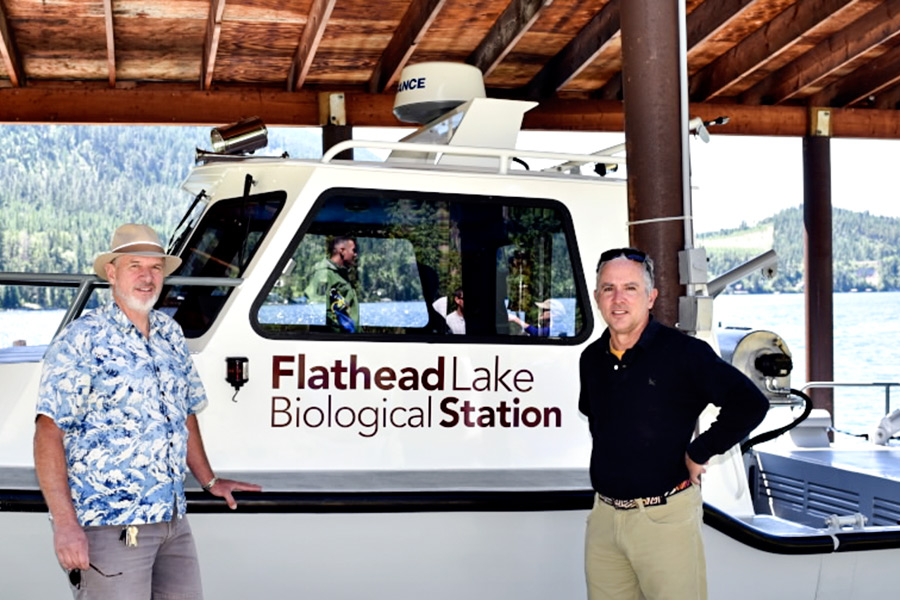New Director Starts Work at Flathead Lake Biological Station
James Elser begins on-site tenure at one of the most respected research stations in the U.S.
By Dillon Tabish
The dream has officially come true for James Elser.
The world-renowned freshwater ecologist moved into his new residence March 1 and began his on-site tenure as director of the century-old Flathead Lake Biological Station in Yellow Bay.
“It’s very exciting. I’ve always had a dream of having a lake outside my door,” he said last week while settling into his new setting.
Elser accepted the lead position last summer, taking the reins from Jack Stanford, an internationally renowned scientist in his own right who served as director the last 36 years. Stanford started at the University of Montana’s field station along Flathead Lake in 1972 as a doctorate student pursuing stonefly research and became director in 1980. He is credited with shaping the biological station into a world-class research site for freshwater ecology and limnology, the study of inland waters.
The longest serving director in the station’s 117-year history, Stanford is helping Elser with the transition and will retain emeritus status with an office at the station.
“He’s been very gracious and offered help when needed. He’s a living legend, if you will, and it’s been great working with him during this transition,” Elser said.
Elser and his wife, Monica, are coming from the desert landscape of Arizona, where Jim served as regent’s professor at Arizona State University and was a distinguished scientist and scholar. Among his many notable qualifications, Elser was president of the world’s largest water-science society, the Association for the Sciences of Limnology and Oceanography, and has been published in more than 220 scientific journals.
For years, Elser turned down other prestigious positions awaiting the opportunity to work at the Flathead Lake Biological Station, one of the oldest active field stations in the U.S. since its inception in 1899.
Now Elser is here, marking the dawn of a new era for one of the most respected research stations in the nation. Monica Elser is the new education liaison at the station. She will work to connect communities and the university to the scientific research taking place at Flathead Lake.
Elser said one of his first tasks will be filling two open positions for assistant professors in river ecology and microbial ecology. Interviews are taking place this month and the goal is to have the new faculty working by fall, Elser said.
The station is also gearing up for the annual summer sessions, which welcome nearly 50 students for four-week and two-week on-site courses.
Beyond the day-to-day duties at the station, Elser said he will be focusing on meeting the broad community of the Flathead Valley.
Elser also plans on becoming familiar with issues in and around the Flathead basin, such as frequent coal trains traveling along the Flathead River that fuel concerns of a potential spill that could devastate the watershed and its natural resources, a topic his predecessor spoke about often.
“Jack’s been worried about that and I plan on learning more about it. That is a pretty high-level risk right there,” he said.
The retreat of glaciers in Glacier National Park and its implications on the ecosystem is another topic on his mind as he settles into the valley.
The threat of aquatic invasive species is also an issue at the forefront of all limnology researchers, and Elser said the biological station is preparing for potential ground-breaking developments on that front.
Elser is bringing with him Cody Youngbull, a former assistant research professor at the School of Earth & Science at ASU, to Flathead Lake to further develop bio analytical sensors that could detect non-native species underwater. Youngbull has been researching and developing the sensors for years and plans to create a company in the Flathead that produces these sensors. He will arrive in June, Elser said.
For more information about the biological station, visit http://flbs.umt.edu.